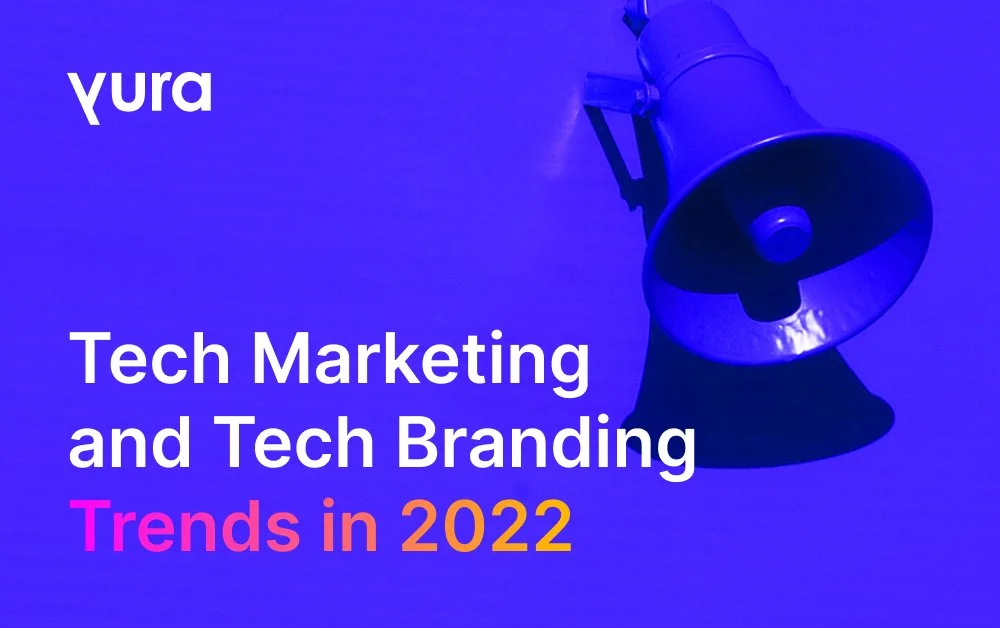Top 9 Branding Trends For 2021
The top 9 branding trends for 2021 are here now. It’s a great start for the new branding year. And last year tells us more than enough what to expect in the future. Undoubtedly, good branding is the real game-changer for a company. It sets brands apart from the competition in any industry.
What does branding actually mean?
To build a brand, it is very important that every one of us is extremely focused, and motivated.
Consistency is a key ingredient in building a brand reputation.
Simply put: “Creating, building and maintaining that reputation is “BRANDING”.
Also, if you want to know more about it, we have an amazing free branding toolkit for you.
Coming back to our pivot point for our top 10 branding trends for 2021, we tried our best effort to bring you these trends.
A catchy name and a nice logo are no longer enough for consumers in this era. So you need to have a solid brand identity and reputation that acts as the backbone for your brand.
But the question is, how will you create that solid brand identity, and what are those branding trends for 2021 to keep you on top of your competitors?
In this, we have all the things from design tips, social media strategies to customer-driven branding strategies, and techniques to help you out.
Top 9 Branding Trends For 2021
Logo Adaptability
Blandified Branding
Brand Marketing
Branded Visual Content
Brand Authenticity
Brand Inclusivity
Sustainable Branding
Humanized Brand Personality
Customer Driven Branding
Logo Adaptability
Your company needs to be everywhere in this digital era for following branding trends if you want your company to be noticed and recognized: the omnipresent brand.
This is forcing companies to create a shape transition in logo design.
Logo Tip
It includes the change in size, color, or complexity of the logo.
In fact, what you can do is just create a logo for your website, and then use its simpler icon for social media platforms like Facebook, Instagram, and Twitter.
Another helping technique is to use a one-tone logo for watermarks on photos.
By attaining these three variations, you ensure consistency in logo design no matter what size or platform you choose to see your logo. Furthermore, it allows your customers to recognize your branding in different ways, which makes it pretty easy to recall, too.
Even when you’re thinking about logo adaptability, you can think about some of the questions that you should be answerable to:
Can I use this logo horizontally, vertically, or in a square?
Will it be an effective logo, when it’s.
Printed in a solid color?
Embroidered on a shirt?
Printed on a small thing like a pen?
Printed on a bigger thing like a billboard or truck?
This adaptability and recognition of your logo make it to be used for a wide array of applications.
2. Blandified Branding
Minimalism has taken the world by storm for the last couple of years in branding trends. Everyone seemed to eliminate the cluttering and make it more clear and simple as as possible. And we think it’s being adopted universally by tech giants.
P.s. Blanding means adding a moderate and tranquil quality to your identity.
For example, Google and Airbnb did a facelift recently and changed their logo by using Sans Serif, which is an expression of minimalism. Similar to this, heritage brands such as Balmain, Yves Saint Laurent, and Balenciaga move their brands in this direction too.
In fact, most of the brands follow only two colors for their companies.
So why do brands choose to use blandified branding, besides minimalism?
Because it gives them a better chance of becoming iconic. After all, the simpler the font and colors, the easier it will pair with all kinds of supported graphics.
Pro Tip:
Simple and clear branding makes it easier for your customers to recognize you.
Blanding your logo and color scheme enables you to use different graphics for ads and other purposes.
3. Nostalgic Brand Marketing
Since being distinctive is harder in the digital age, the innovations of the past now play a more important role in branding.
Many of us love the past and want to regain the feeling of how things used to be. Using nostalgic brand marketing for branding trends, you can revive old memories, and attach positive feelings to your products and services. Resulting in an increase in customer confidence and perceived authenticity.
A good example that new brands can mimic would be Spotify’s retro-space advertising that revived the culture of the 80s and 90s and compares it to 2019.
Pro Tip:
Nostalgic Brand Marketing (NBD) enables you to tap into customers’ positive memories and makes stronger relationships and customers’ trust more efficient and predictable among certain age groups.
4. Branded Visual Content
Humans are visual creatures. Naturally, we are better at keeping images than any other form of content. However, from a brand marketing perspective, it does not mean that all types of visual content get the same response.
According to HubSpot, using detailed and branded images can help you gain 67% more audience attention. In addition, this type of content allows you to generate new leads more effectively on social channels.
Therefore, you will see that many B2C sellers are now focusing on creating videos and webinars, according to Content Marketing Institute.
Global research done by Hubspot shows clearly that video has become the most commonly used format than blogs, and infographics in content marketing.
5. Brand Authenticity
Customer confidence has reached a record high in the last two years for branding trends. That's why creating authentic branding is essential for modern businesses.
A Stackla report on consumer content revealed that 86% of buyers consider authenticity as an important factor in purchasing decisions.
Photoshopped ads, highly edited ads, and the use of perfect image templates no longer appeal to modern buyers. They prefer to do business with honest and real companies.
A good example of this would be McDonald's, and after controversies over their ingredients, they decided to post a backstage video of how they make their food in hopes of evoking transparency.
They also launched an “Our Food, Your Questions” campaign in which they answer the most popular questions about their business and publish information via webisodes. As a result, this campaign allowed them to correct misconceptions about their brand and curb negative rumors about their food.
Therefore, you can also apply this strategy by showing fragments of your manufacturing processes. Similarly, you can share the origin of the material or how you control quality to help customers learn a little more about your brand's activities.
6. Brand Inclusivity
Diversity, body positivity, and inclusiveness reconfigure customer expectations. However, many of these companies are also struggling to meet demand in branding trends.
To help you get an idea of how to handle this for your brand, some business examples that stand out in promoting inclusiveness are the personal care brand Dove, the underwear company ThirdLove and the cosmetics brand Fenty Beauty.
These brands made an important point of asking real women to appear on their ads instead of hiring perfect image models. They launched advertising campaigns aimed at breaking the stereotypes of beauty. It pays to be imperfect.
This means giving women of all ages, ethnicities, shapes, sizes, and sexual orientations to empower their clients. Of course, if your brand does not necessarily serve women, you can make your brand inclusive by other means.
For example, it can be economically inclusive by offering products at different prices. This will allow you to reach customers from different areas of life.
7. Sustainable Branding
Studies show that 88% of consumers believe that businesses can influence social change. They should therefore play a leading role in solving environmental problems by providing more sustainable products.
In addition, today's buyers are more aware of what they are buying. They make it a point to opt for more sustainable brands whenever they can.
In fact, according to Global Web Index 2018, 58% of Gen Zers, 61% of millennials, 55% of Gen Xers and 46% of baby boomers consumers will pay more for organic products.
With this data, it's no wonder that many brands implement sustainable operating practices as well as ethical business processes. In this way, they can gain the trust and loyalty of their customers. Doing the right thing means good business.
8. Humanized Brand Personality
The truth of the matter is, it’s difficult for people to trust brands. They imagine that most companies are simply after their money. If you would like them to try to do business with you, you want to humanize your brand.
Attaching a personality to your brand is one of the foremost tried and tested brand marketing trends of all time. After all, even as people have multifaceted personalities, so should your company.
One such company that has successfully implemented this strategy is Old Spice, an American brand selling male grooming products. Across their posts, ads, and websites, they're consistently playful and wacky.
With this, they keep their customers from becoming bored with the content that they publish. Moreover, they create themselves more approachable to customers.
9. Customer-Driven Branding
The modern business branding trends have brought customer driven data to new heights. Today it is not just about doing surveys to find out what the target audience wants.
Now brands are involving their customers as well in the production of products, campaigns, and content.
In fact, 77% of shoppers like to prefer brands that collaborate with them. Because it empowers them to work with you when you let them join your creative process.
Even it makes your brand more trustworthy and authentic.
Pro Tip:
Involving customers in the creation process makes brands trustworthy.
Customer-driven branding leads to better retention and engagement.
Finally, the most important branding trends for 2021 to keep an eye on for the next few years might be the uprise of new digital platforms and social media channels. Facebook, LinkedIn, Whatsapp, and Twitter are being challenged by the general public and governments to create more transparency, data privacy, and safety. 2021 might be the year in which new platforms and channels will come to the surface and win hearts of users.
In order to benefit from all of these developments in technology, marketing, and branding, your strategy will need to be highly flexible and adaptable.
Happy hunting.


















